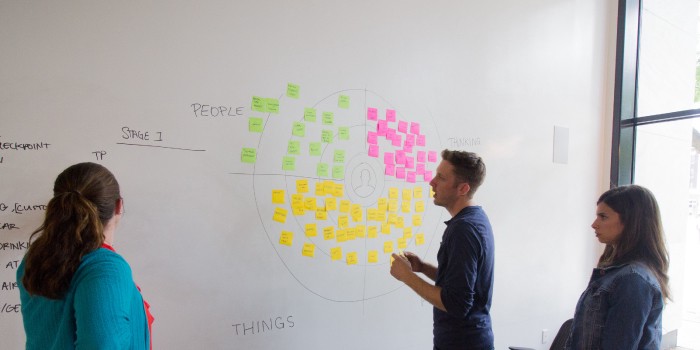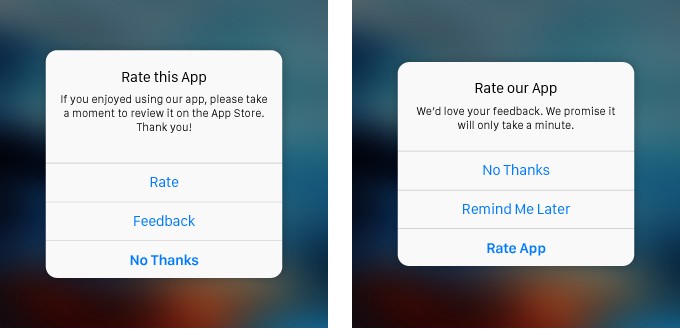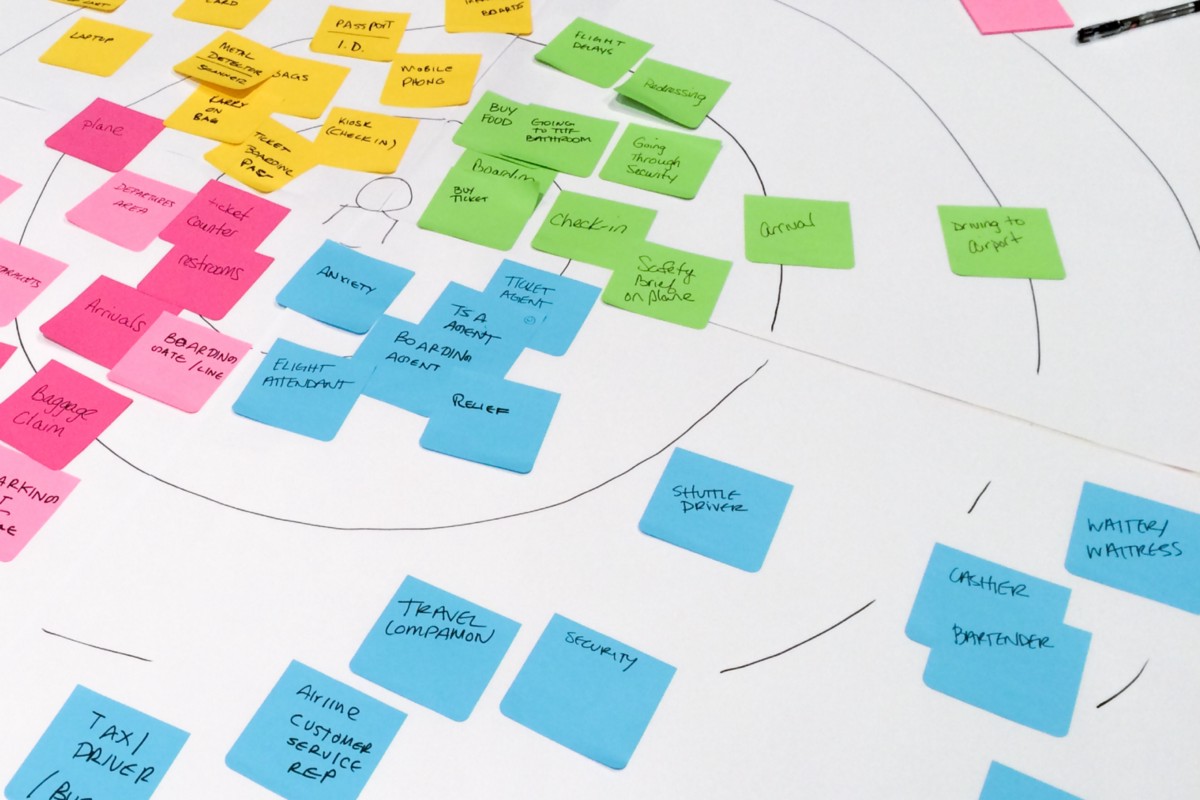Human-Centered Design, in short, is the practice of a management and problem solving process that places people (your customer) at the center of every decision. It requires curiosity and contextual observation, empathy, ideation, iteration, and implementation. “Human-centered” is the core of user, customer, and service experience design (UX, CX, SX).
Almost every company has a competitive landscape (or will shortly). When you’re developing a new product or service, there’s a high likelihood somebody else has noticed that same gap or need and is innovating a similar solution — but that’s not the issue.
The current state of technology has enabled companies to rapidly define new business opportunities and grow into spaces they’ve previously overlooked or avoided. Using a human-centered design approach is helping these businesses gain loyalty, grow their customer base, and realize revenues like never before.

For companies to stay ahead, they need to adjust processes that have previously been focused on better, faster, cheaper — and start practicing curiosity, empathy, and testing to drive quality and better experiences. We are all entering (and somewhat stumbling) into the Era of the Customer.
The Era of the Customer.
It’s a transition of power. Customers are not blindly using what you give them anymore. Earlier this year, Millennials surpassed Baby Boomers as the largest generation in the United States, making up roughly a quarter of our population. Not every company has a product that’s aimed towards Millennials, but considering the age demographics are roughly 18–36, it’s a large swath of the tech savvy population.
This generation is highly critical, willing to speak their mind, write reviews, and research to understand the landscape of solutions available to them. In addition, they are expecting immediate value, meaningful brand interactions, and not willing to accept the “it’s just the way it is” way of life. In short, they have much different expectations than preceding generations (and in many cases, they’re higher).
Millennials are forcing a shift in the way we think about product development and innovation. In an effort to gain immediate insights, everyone from Apple and Google, to Yelp and Airbnb are making it easier to rate and review the things we experience. Not only that, they’re encouraging it on a frequent basis (…to the point of annoyance in some cases). Think about how many times you’ve experienced a pop-up asking you to review a new app, or how often Twitter says that “You were one of a select few” to fill out a survey. Did you actually feel like you were one of a select few? Maybe the first time. But what about the third time? Those in-context, quick feedback pop-ups are easy for companies to execute, but customers are expecting brands to connect with them in a more personal way.

This type of feedback can be helpful for your business, but it’s not establishing a real relationship with your customers.
Your new generation of customers will expect a relationship — either with you, your product, or both. This can manifest in a few different ways, but your human-centered, qualitative research should guide you along the way.
This generation of customers expects a relationship — with you, your product, or both.
Consumers are saturated with information, and with products at their fingertips, they have the upper hand.
Technology is an equalizer. Experience is the differentiator.
Not too long ago, technology was the differentiator — but technological capabilities are growing at an incredible rate. The only way that technology acts as a differentiator today, is if you or your competitors choose not to embrace it.
“We won’t experience 100 years of progress in the 21st century — it will be more like 20,000 years of progress (at today’s rate)”
– Ray Kurzweil, Futurist
As technology equalizes the playing field, almost anyone can assemble people and technology to create or reinvent everyday consumer products. Outside the fear of patent trolls (which is apparently a pretty lucrative business…), it’s not that hard to replicate apps, interactions, and widgets.
What is a challenge, however, is replicating a deep understanding of your customer’s motivations. Accidental industry disruption does happen, but it’s rare. Real, healthy change is generally the result of a process — a process that starts by changing the lens through which we view our customers. If you curate the type of culture that’s empathetic and curious, you will stay on top of customer needs, and in some cases, know their needs before they do.
Your deep customer understanding that leads to disruption — that’s something a competitor won’t be able to steal.
What a competitor can’t steal: your deep understanding of your customers.
If you can shift your mindset and position your customer’s needs over your business’s needs, you’ve taken the first step towards designing the right solution. This is much easier said than done. It needs to be distilled in the organization from the top down, and requires a leadership team that’s passionate and humble.
“By 2020, user experience will replace price and product as the key brand differentiator.”
– Jonathan Beckman, Founder of Apptourage, EVNTLIVE, and GameOn
A human-centered design approach can improve organizational health.
The human-centered design process can cure some age-old office politics, minimize personal agendas, and stop opinion-centered disagreements. Here is a small-scale example, but these conversations can happen at all levels of the business:
- Product Owner: “I think we need to be able to edit this information. They won’t understand that they need to delete it and start again if there’s an issue.”
- Designer: “I think it’s going to work fine this way. If we add in the editing feature, it will clutter the screen and be more distracting as they move through the flow.”
- Developer: “I can see both points, but I’m less concerned with that. I’m more worried about the interaction animations throughout this process. I don’t think that extra animation is going to benefit anyone, and it will tack on extra time to implement. We were given a deadline.”
- Product Owner: “Fine, we can cut the animation, but I still feel like the user would want an edit…”
… and on, and on. Here is a list of four things that could remedy a conversation like that:
1. Curiosity: Up-Front, Qualitative Research
This would have fueled a better understanding of the customer’s goals and motivations as it relates to the task, helping you (the company) understand what they’re thinking and feeling as they complete the task at hand. Why were they doing it? What was the consequence of not completing it? What happens if it was done wrong? How did they feel during the process?
2. Empathy: A “Customer First” Focus
This team doesn’t have the right behavioral research to help them move forward — and now, they are making suggestions and decisions based on personal opinion rather than putting themselves in shoes of their customer. It’s not very often that the business and customer are one in the same. That means you have to be intentional about not imposing your preferences on the solution.
3. Scientific Thinking: An Iterative, Test-Centric Mindset
This would have led the conversation to sound more like “I’m not sure if edit is needed during this flow, but we should definitely test that and better understand the user’s mental model for working through this part of the system.”
Scientific thinking is timeless. Form a hypothesis, then test it. In addition, this could have helped the team understand if the animation was useful or not. Did it help the user understand the framework? Did it help keep them in a context? If not, did they understand that they moved to a new space in the system? Is the animation helping them understand what part of the process they’re in?
4. Staff Performance: What really is measurable success?
The first three hallmarks of human-centered design cannot happen if an organization is unwilling to flex (time and money), and bases employee reviews on meeting quick, arbitrary deadlines. I’m not saying there shouldn’t be deadlines, but they should be meaningful. Milestones, not deadlines, are what keep organizations moving forward. I am merely suggesting that organizations be understanding and receptive to discoveries and barriers along the way — and if you’re conducting the right type of qualitative research and testing your ideas, I can guarantee there will be times you need to change course. More than likely, it will move checkpoints, deadlines, and launch dates (or at the least, adjust what will be included at launch).
